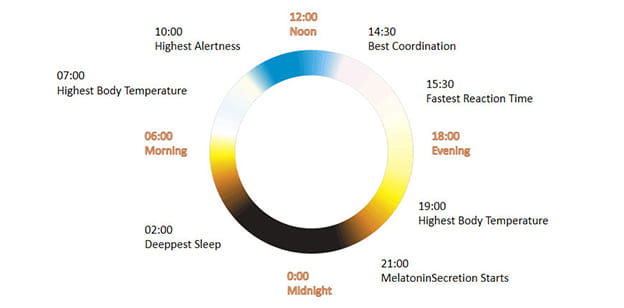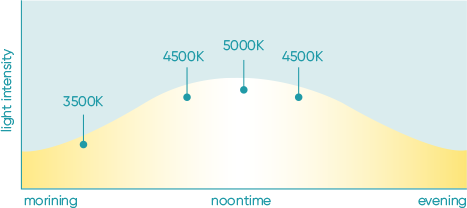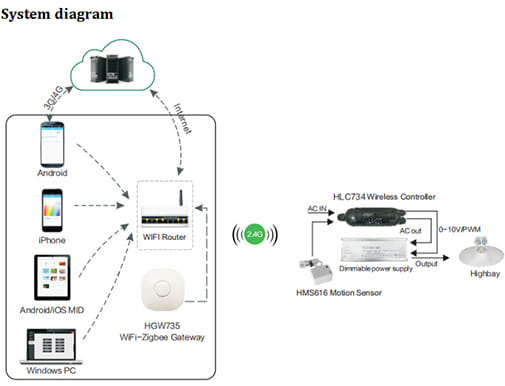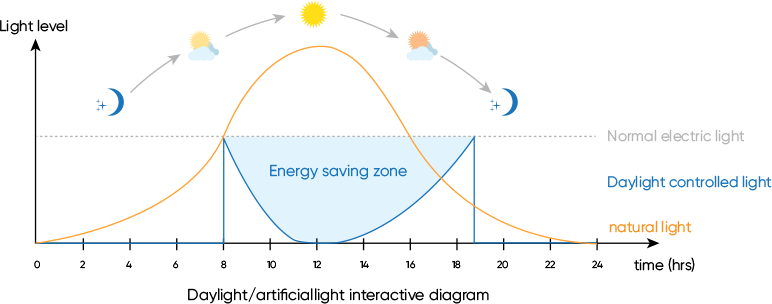- Home
- Products
- Topics
- Applications
 From industrial to outdoor lighting, AGC lighting have worked with a number of different customers around the world.View All Case Studies
From industrial to outdoor lighting, AGC lighting have worked with a number of different customers around the world.View All Case Studies - Sustainability
- Blog
- Resources
- Contact
AGC intelligent lighting provides optimal light levels for different tasks and moods. It allows you to modify light intensities depending on their personal preferences or activity-based needs.
Featured APP control, AGC intelligent lighting systems allows you to control lighting systems via smartphone. You can switch, dim, group and configure your lights according to your preferences.
AGC intelligent lighting provides real-time feedback and insights of electricity measurement, failure statistics and other conditions of all fixtures, so that helps to reduce labor cost on maintenance.
AGC intelligent lighting can help to provide adequate lighting in areas where safety is a concern. It can reduce the risk of accidents by ensuring that worker can see their environment clearly and react in timely manner.
AGC intelligent lighting solutions are designed to last longer and require less maintenance. With fewer replacements and less maintenance, it can help to reduce operating and maintenance costs in industrial applications.
AGC intelligent lighting solutions are designed to be energy-efficient. It can adjust the lighting intensity and color temperature according to the needs of the environment, thereby reducing the energy consumption and carbon footprint.

Bluetooth lighting control is a wireless lighting control system that uses the Bluetooth protocol to communicate between lighting fixtures, controllers, and sensors. This system allows for easy installation, low cost, and compatibility with a wide range of light fixtures and sensors.
Casambi is a Bluetooth-based wireless lighting control solution that caters to industrial facilities. Casambi solves these problems of connectivity and reliability of wireless lighting control well. Casambi is fast and easy to specify, use, and maintain since all the wiring and possible future re-wiring can be made with software. The uncomplicated yet feature-rich application enables you to seamlessly control your lighting from a smartphone or tablet.
Human Centric Lighting (HLC) is an intelligent lighting system that is designed to improve the well-being and health of humans. Industrial applications are an important area where HCL can be applied effectively. HLC is a smart lighting solution that can adapt for different industrial environments and needs. It provides optimized daylight patterns that help workers manage their circadian rhythms, improve their productivity and performance, and enhance their metal and emotional well-being.


Casambi is a Bluetooth-based wireless lighting control solution that caters to industrial facilities. Casambi solves these problems of connectivity and reliability of wireless lighting control well. Casambi is fast and easy to specify, use, and maintain since all the wiring and possible future re-wiring can be made with software. The uncomplicated yet feature-rich application enables you to seamlessly control your lighting from a smartphone or tablet.

AGC HCL can support the circadian rhythm of workers. When your body follows the sun’s natural pattern, it can improve your sleep quality through adjusting the hormone balance in your body. Then, you sleep better.

AGC HCL can improve performance by enhancing your ability to concentrate and reducing fatigue, which can lessen 20% errors rate and increases 12% productivity. Therefore, Your business is thrive.

If you sleep better, you are more productive. You will also feel happier and more energetic. AGC human-centric lighting (HCL) stimulates the natural circadian rhythm, increasing you well-being and boost your mood.
With AGC HCL lighting solution, you can control individual or a group of lighting fixtures by Tuya app on phone. Simple and quick to realize turn on/off the light, as well as the brightness and color temperature (tunable from 3000K to 5000K). Most importantly, multiple scenes can bee set regularly according to your needs. Each scene can be set with different color temperature and brightness.



ZigBee works by creating a wireless mesh network among different devices that use ZigBee protocol. A mesh network means that each device can also act as a router, extending the range and reliability of the network. This system allows for an automated and personalized lighting control solution that delivers high energy efficiency, easy installation, and compatibility with a wide range of light fixtures and sensors.
Here is an example of a Zigbee lighting control system with motion sensor:

AGC intelligent lighting solutions use sensors help you control and adjust lighting levels in a facility based on occupancy, ambient light, or user preferences. You can significantly reduce energy consumption and operational costs, while creating a safer and more productive workplace for their employees.
Daylight sensors work by measuring the amount of natural light present in a particular area. They can adjust the level of light needed based on the amount of natural light available. Daylight sensor are important for optimizing energy efficiency and reducing energy costs.

PIR (Passive Infrared) Sensors are commonly used in lighting control systems to detect motion and occupancy in a space. PIR sensors are an excellent choice for use in lighting control systems because they are highly sensitive to movement and can be adjusted to fit the specific needs of a space.
Microwave Sensors detect motion by emitting microwave signals and measuring the reflections that bounce back from nearby objects. When used in lighting control, microwave sensors are used to ensure that lights are only turned on and used when the space is occupied.
Discover the difference between PIR sensor and Microwave sensor

DALI (Digital Addressable Lighting Interface) is a lighting control protocol and system that allows for digital communication between a lighting control system and the light fixtures that are connected to it. The DALI system allows for two-way communication, providing feedback on the status of connected lights and enabling control of lighting fixtures from a centralized location or through the use of smart devices such as phones or tablets.

The 0-10V dimming lighting control works by varying the voltage supplied to the lighting fixture between 0 and 10 volts to adjust the light output. The control signal is usually provided by a dedicated dimmer control or lighting control system. When the lighting system is set to maximum brightness, the input control signal to the dimmer control or lighting control system is set to 10 volts. This voltage is supplied to the lighting fixture, which results in maximum light output. 0-10V dimming provides a smooth and continuous dimming effect, making it a popular choice in industrial settings where precise control over lighting levels is required.

DMX (Digital Multiplex) lighting control is a popular protocol and system that is widely used for controlling and managing lighting fixtures in the entertainment industry and architectural lighting applications. This system allows for a centralized and precise control over numerous lighting fixtures, providing synchronized and dynamic lighting effects. The DMX protocol allows for a max of 512 control channels in a single DMX data universe. Each lighting fixture is assigned a unique DMX address that is set via a dip switch on the fixture, allowing it to be individually controlled according to its unique channel. This provides precise control over individual lighting fixtures or groups of fixtures, and enables the creation of complex lighting scenes and special effects.
